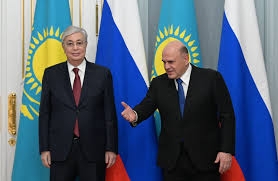Russia is a vast country with a diverse population, encompassing numerous ethnic groups. While Russian ethnicity dominates, a significant number of other ethnicities, particularly in the Caucasus and Siberia, contribute to the country’s rich cultural mosaic.
Historical Context
The Russian Empire and later the Soviet Union incorporated a vast territory with diverse ethnic groups. This diverse population was often subjected to policies of Russification, aimed at assimilating non-Russian ethnic groups into the dominant Russian culture. However, despite these efforts, many ethnic groups retained their distinct cultural identities.
Major Ethnic Groups in Russia
- Russians: The largest ethnic group in Russia, Russians constitute a majority of the population.
- Tatars: The second-largest ethnic group, Tatars are predominantly Muslim and have a strong cultural identity. They are concentrated in the Volga-Ural region, particularly in Tatarstan.
- Ukrainians: A significant minority, particularly in southern and eastern regions of Russia.
- Bashkirs: A Turkic people native to Bashkortostan, a federal subject of Russia.
- Chechens: A North Caucasian ethnic group with a strong sense of national identity and a history of conflict with the Russian state.
- Chuvash: A Turkic people native to the Chuvash Republic, a federal subject of Russia.
- Dagestanis: A diverse group of ethnicities living in the Republic of Dagestan, including Avars, Lezgins, Dargins, and Kumyks.
Ethnic Tensions and Conflicts
Despite the diversity of ethnic groups, Russia has experienced significant ethnic tensions and conflicts, particularly in the North Caucasus region. The Chechen Wars, for example, were a result of Chechen aspirations for independence and self-determination. Other regions, such as Dagestan and Ingushetia, have also experienced periods of instability and violence.
Challenges and Opportunities
Russia faces several challenges in managing its diverse ethnic relations:
- Economic Disparities: Economic disparities between regions can exacerbate ethnic tensions. Regions with significant ethnic minorities often face economic disadvantages, leading to feelings of marginalization and resentment.
- Religious Differences: Differences in religion, particularly between Orthodox Christians and Muslims, can lead to misunderstandings and conflict. Religious extremism and terrorism pose a significant threat to social stability.
- Nationalism and Separatism: Strong nationalist sentiments among some ethnic groups can pose a threat to national unity. Separatist movements, particularly in the North Caucasus, have challenged the territorial integrity of Russia.
To address these challenges, Russia needs to promote tolerance, intercultural dialogue, and equitable development. Investing in education, healthcare, and infrastructure in all regions can help to reduce economic disparities and improve social cohesion. Additionally, promoting cultural diversity and recognizing the rights of minority groups can foster a more inclusive and harmonious society.
However, the path to a truly inclusive and tolerant Russia is fraught with challenges. The legacy of Soviet-era policies, coupled with the rise of nationalism and authoritarianism, has made it difficult to address deep-seated ethnic tensions. Nonetheless, by embracing diversity and promoting dialogue, Russia can work towards a future where all its citizens, regardless of ethnicity or religion, can live in peace and harmony.

Leave a Reply